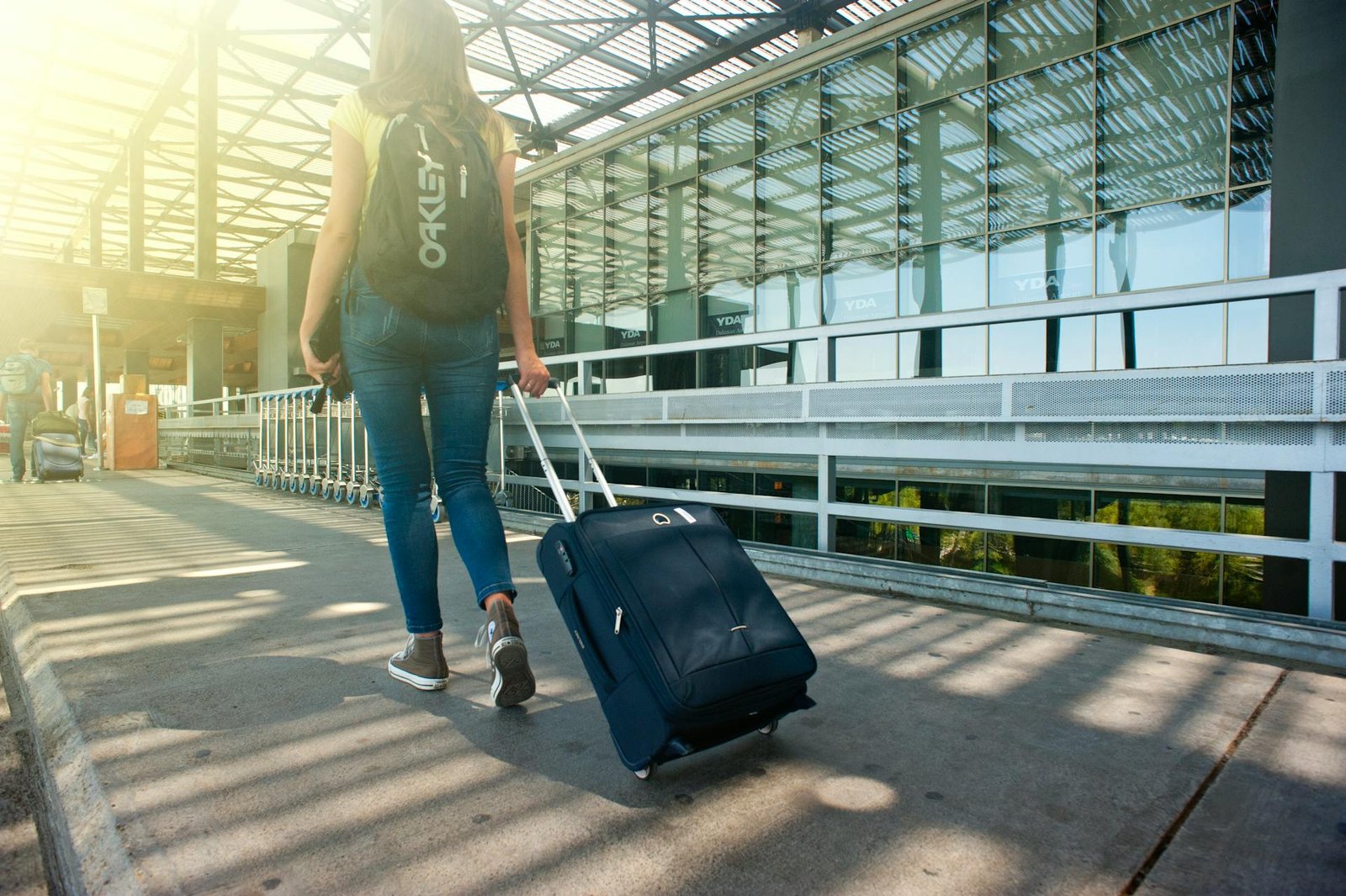Picture this: you’re sipping coffee in a Chiang Mai café, your laptop humming with work, when you realize your visa’s about to expire. Panic? Nah, you’ve got options. As a digital nomad in 2025, navigating visas is part of the adventure, and border runs and visa extensions are two key tools to keep your global journey legal. With over 60 countries offering nomad visas and millions working remotely, understanding how to extend your stay is crucial. This guide breaks down everything you need to know about border runs and visa extensions, from planning to execution, tailored for nomads in popular hubs. Packed with 2025 insights and nomad tips, here’s how to stay on the move without breaking the law.
What Are Border Runs and Visa Extensions?
- Border Run: Leaving a country briefly (often to a neighboring country) and re-entering to reset or extend your visa’s validity. Common in places like Thailand or Mexico, where tourist visas have short durations.
- Visa Extension: Applying to extend your current visa without leaving the country, typically through immigration offices or online portals. Rules vary by country and visa type.
Both are used by nomads to prolong stays in destinations like Bali or Lisbon, but they come with risks, costs, and regulations.
Top Tips for Border Runs and Visa Extensions
Here’s how to master these processes in 2025, with examples from nomad-friendly countries.
1. Research Visa Rules Thoroughly
Each country has unique visa policies, and 2025 rules are stricter due to increased nomad traffic. Missteps can lead to fines or bans.
- Action: Check official government sites (e.g., Thailand Immigration Office) or Nomad List for visa durations, extension limits, and border run policies. Note tourist vs. nomad visa differences.
- Example: Thailand’s tourist visa (60 days, extendable 30 days) allows one border run; Malaysia’s tourist visa (90 days) often requires a longer exit.
- Why It Works: Knowing rules prevents overstays (e.g., Thailand’s 500 THB/~$14 USD/day fine).
2. Plan Border Runs Strategically
Border runs involve exiting and re-entering, but random trips can raise red flags with immigration.
- Action: Choose nearby borders (e.g., Thailand to Laos via Nong Khai, $20–$50 USD round-trip bus). Book transport via 12Go Asia (~$10–$50 USD). Stay 1–2 nights to avoid suspicion. Carry proof of onward travel and funds.
- Example: A nomad in Chiang Mai buses to Vientiane, Laos, stays overnight ($30 USD hotel), and returns with a new 60-day Thai visa.
- Why It Works: Planned runs look like legit travel, reducing scrutiny.
3. Use Visa Extensions When Possible
Extensions are often cheaper and less hassle than border runs, available in-country at immigration offices or online.
- Action: Apply early (1–2 weeks before expiry) at offices like Bangkok’s Chaeng Watthana ($55 USD for 30-day Thai extension) or online portals (e.g., Portugal’s SEF). Bring passport, photos, and fees.
- Example: A nomad in Bali extends their B211A Visa for 60 days ($100 USD) via an agent like InvestinAsia, avoiding a Singapore run.
- Why It Works: Extensions save travel costs and time.
4. Leverage Digital Nomad Visas
Many countries now offer nomad visas (e.g., Thailand’s DTV, Spain’s Digital Nomad Visa) with longer stays, reducing reliance on runs or extensions.
- Action: Apply for visas like Colombia’s ($684 USD/month, 2 years) or Costa Rica’s ($3,000 USD/month, 1–2 years) via embassies or agents like Emerhub ($500–$2,000 USD). Compare on Nomad List.
- Example: A nomad switches from Thailand’s tourist visa to the DTV ($13,665 USD bank balance), staying 180 days without runs.
- Why It Works: Long-term visas minimize border hopping.
5. Avoid Overusing Border Runs
Frequent runs can flag you as a visa abuser, risking entry denials.
- Action: Limit runs to 1–2 per year. Combine with extensions or nomad visas. Show ties to your home country (e.g., return ticket) at borders.
- Example: A nomad in Mexico alternates border runs to Belize ($50 USD bus) with Temporary Resident Visa applications ($2,000 USD/month).
- Why It Works: Moderation keeps immigration happy.
6. Budget for Costs
Runs and extensions aren’t free—factor in transport, fees, and accommodation.
- Action: Budget $50–$200 USD per run (e.g., Thailand-Laos bus, $20 USD; hotel, $30 USD) and $30–$150 USD per extension (e.g., Bali, $100 USD). Use apps like YNAB to track.
- Example: A nomad in Chiang Mai spends $100 USD on a Laos border run vs. $55 USD for a local extension.
- Why It Works: Planning prevents financial surprises.
7. Stay Informed via Communities
Immigration rules change fast, and nomads share real-time tips.
- Action: Join X groups like “Digital Nomads Thailand” or Facebook groups like “Bali Expats” for updates on border run routes (e.g., Mae Sai for Thailand-Myanmar) or extension delays.
- Example: A nomad learns on X about Malaysia’s tightened 90-day visa rules, opting for a nomad visa instead.
- Why It Works: Community insights keep you ahead of changes.
Popular Countries for Border Runs and Extensions
| Country | Visa Type | Border Run Option | Extension Option | Cost (USD) |
|---|---|---|---|---|
| Thailand | Tourist (60 days) | Laos, Cambodia ($20–$50 USD bus) | 30 days ($55 USD) | $50–$200 |
| Indonesia | B211A (60 days) | Singapore, Malaysia ($50–$150 USD flight) | 60 days ($100 USD) | $100–$300 |
| Mexico | Tourist (180 days) | Belize, Guatemala ($30–$100 USD bus) | Not available | $30–$200 |
| Portugal | Schengen (90 days/180) | Spain, Morocco ($20–$100 USD) | D8 Visa ($167 USD fee) | $20–$200 |
| Colombia | Tourist (90 days) | Ecuador, Panama ($50–$150 USD) | 90 days ($50 USD) | $50–$200 |
Pros and Cons
- Pros:
- Extends stays affordably (extensions often <$100 USD).
- Border runs double as mini-adventures (e.g., Laos’ Vientiane temples).
- Nomad visas offer long-term solutions.
- Cons:
- Border runs risk entry denials if overused.
- Extensions require paperwork and office visits.
- Costs add up (e.g., $200 USD/run in Bali).
Financial Breakdown
- Border Run Costs: $50–$300 USD (transport, $20–$150 USD; accommodation, $20–$100 USD; visa fees, $10–$50 USD).
- Extension Costs: $30–$150 USD (fees, $20–$100 USD; agents, $50–$100 USD).
- Total Budget: $100–$500 USD/year, depending on frequency and destination.
Extra Tips
- Carry Documents: Always have passport copies, proof of funds, and onward tickets.
- Use Agents: For tricky extensions (e.g., Bali), agents like InvestinAsia save time ($50–$200 USD).
- Monitor Changes: Follow Nomad List for visa updates.
- Plan B: Have a backup destination (e.g., Malaysia if Thailand denies entry).
For more on nomad visas, check out our guide on Best Digital Nomad Visas in 2025.
Conclusion
Border runs and visa extensions are lifesavers for digital nomads in 2025, letting you stretch your time in hubs like Chiang Mai, Bali, or Lisbon. Research rules, plan runs carefully, and prioritize extensions or nomad visas to stay legal and stress-free. Budget for costs, tap into nomad communities online, and avoid overusing runs to keep immigration on your side. With these tips, you’ll navigate the visa maze like a pro, keeping your global adventure alive and thriving.







